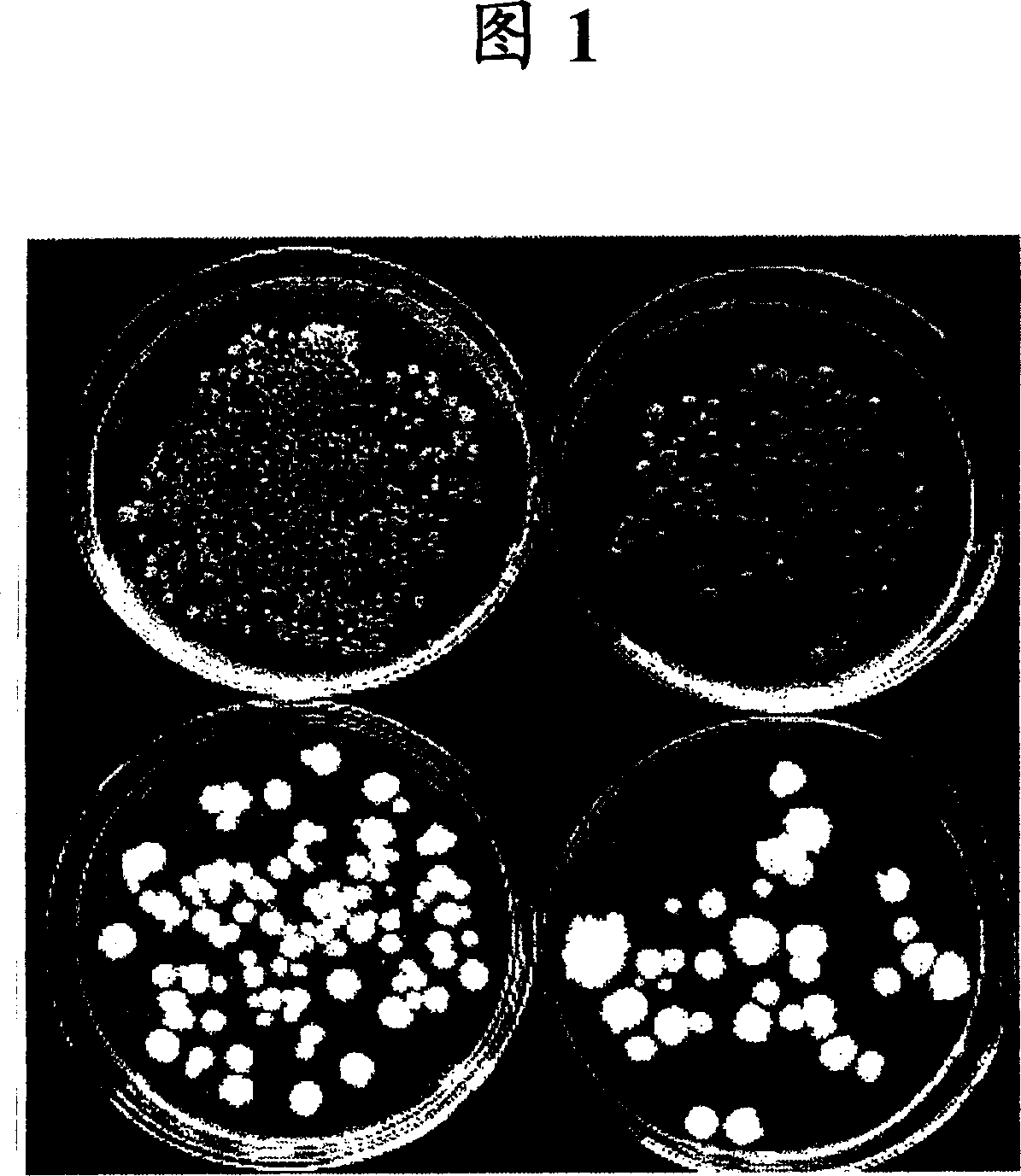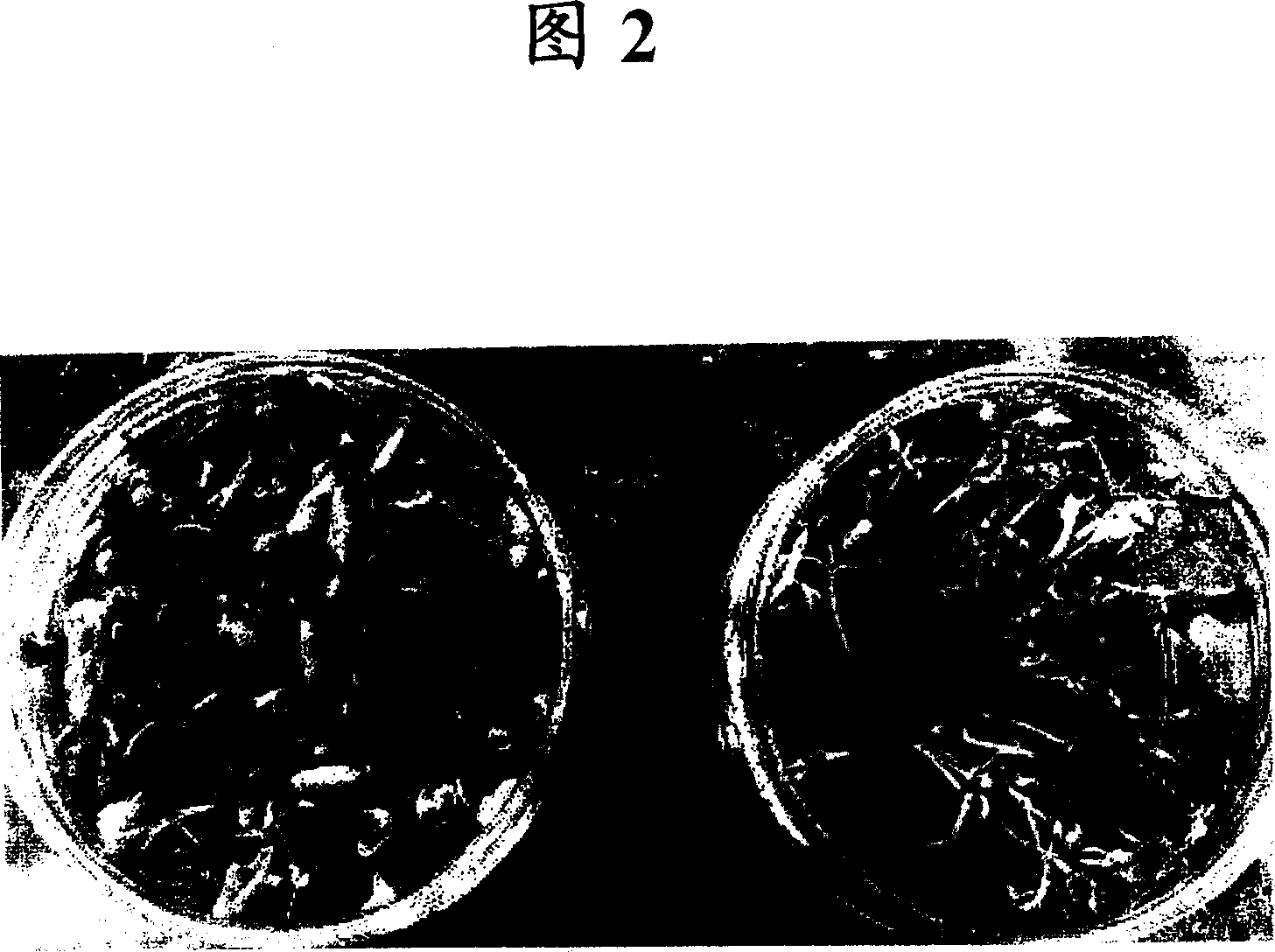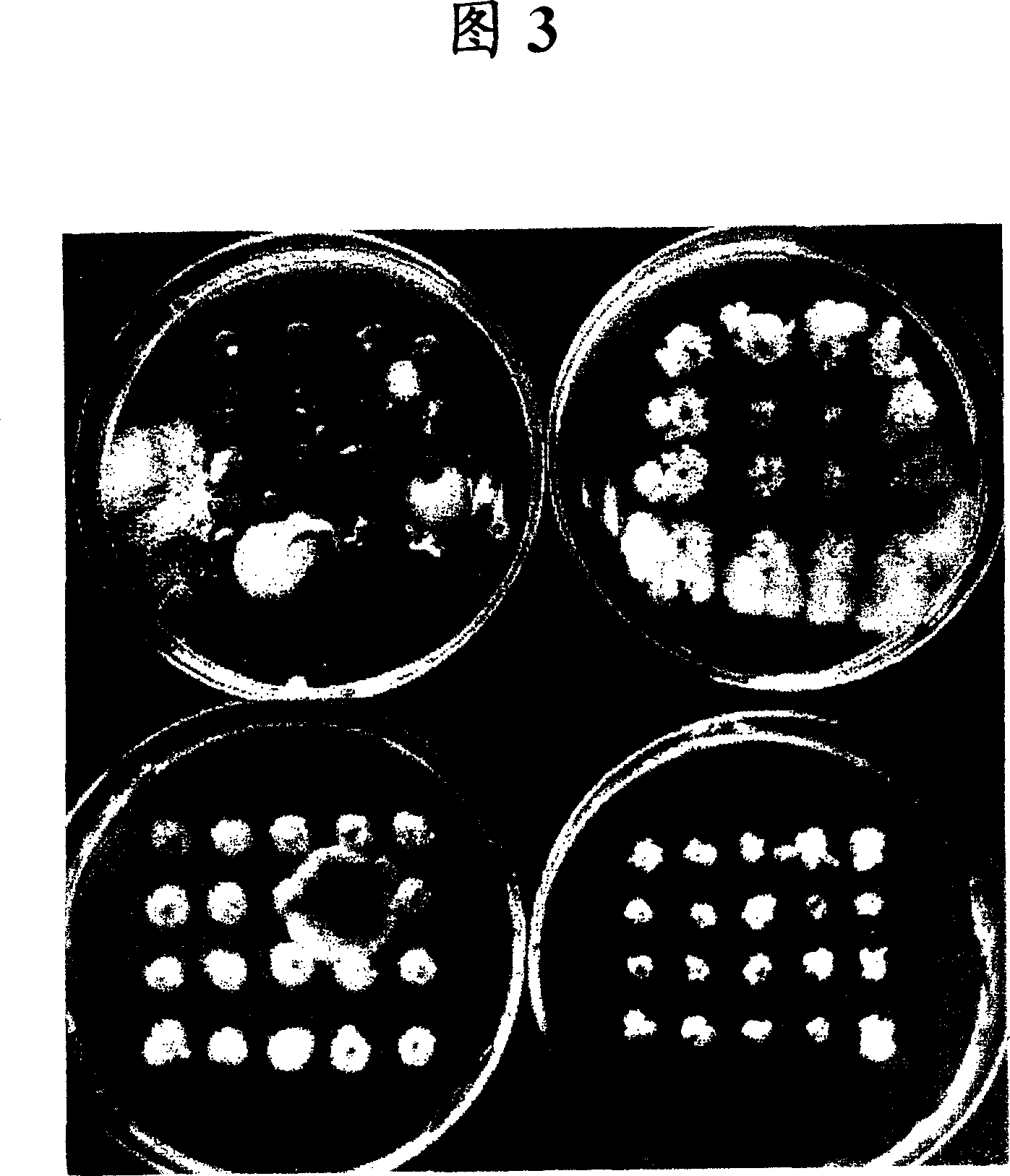Method of controlling plant disease damage by using bacillus and controlling agent
A plant disease control, Bacillus genus technology, applied in the directions of botanical equipment and methods, plant growth regulators, bacteria, etc., can solve the problems of increased drug resistance and dependence of pathogenic microorganisms
- Summary
- Abstract
- Description
- Claims
- Application Information
AI Technical Summary
Problems solved by technology
Method used
Image
Examples
Embodiment 1
[0083] Determination of the maximum growth time of BAL bacteria
[0084] A strain related to Bacillus amyloliquefaciens (hereinafter referred to as "BAL bacteria") (one platinum circulation) was suspended in 9 ml sterile water, and 100 μl of the resulting suspension was added to 100 ml of AG medium (1% glucose (Wako Pure Chemical Industries, Ltd.), 1% polyptone (Nihon Pharmaceutical Co., Ltd.), 0.1% KH 2 PO 4 (Wako Pure Chemical Industries, Ltd.) and 0.05% MgSO 4 ·7H 2 O (Wako Pure Chemical Industries, Ltd.), pH 7.00, autoclaved for 15 minutes) in a 300ml Erlenmeyer flask or 100ml potato infusion liquid medium containing 2% sucrose. (Potato dip is prepared as follows: Cut 200g potatoes into about 1cm 3 , add about 1 liter of distilled water and boil it on low heat for 30-40 minutes, then filter through double gauze. 2% sucrose was added to the filtrate and distilled water was added until the volume reached 1 liter. The resulting product is called "PS medium" and placed ...
Embodiment 2
[0088] Inhibitory Effect of BAL on the Proliferation of Xanthomonas campestris Pathogenic Variety
[0089] Scrape a loop of BAL bacteria from the YPA slant medium and inoculate it into a 300ml Erlenmeyer flask containing 100ml of AG medium. The obtained product was shaken and cultured at 120 rpm at 25° C. for 48 hours with a reciprocating shaker with an amplitude of 10 cm. Xanthomonas campestris pv. campestris suspension (100 μl) was added to the culture solution, and cultured with shaking under the same conditions for 48 hours. The suspension of Xanthomonas campestris pv. campestris used herein is prepared as follows: scrape a ring amount of culture on the slant medium of potato steep agar medium (hereinafter referred to as "PSA") containing 2% sucrose campestris pv. campestris was suspended in 9 ml sterile water. As a comparative experiment (control group), 100 μl of suspension of Xanthomonas campestris pathogenic variety campestris was added to 100 ml of AG medium without...
Embodiment 3
[0093] Preparation of seeds artificially contaminated with Xanthomonas campestris pathogenic variety
[0094] Pakchoi seeds (34 g, variety: Fuyushoumi) were wrapped with gauze and soaked in 500 ml of a 150-fold dilution of Chemicron G (neutral calcium hypochlorite; available chlorine: 70%) for 10 minutes in order to sterilize the seeds. After the seeds were sterilized, they were rinsed under running water for 1 hour, then dehydrated and dehydrated overnight at 35°C. In addition, Xanthomonas campestris pv. campestris was cultured on 5 PSA plates for 3 days in advance, and all the growing bacteria were scraped and suspended in 100ml distilled water to prepare 1×10 12cfu / ml Xanthomonas campestris pv. campestris bacteria liquid. Artificially contaminated seeds were prepared by soaking sterilized seeds (17 g) in a solution of Xanthomonas campestris pv campestris for 20 minutes and then dehydrating at 35°C overnight. Checked the degree of infection and found that the number of inf...
PUM
 Login to View More
Login to View More Abstract
Description
Claims
Application Information
 Login to View More
Login to View More - R&D
- Intellectual Property
- Life Sciences
- Materials
- Tech Scout
- Unparalleled Data Quality
- Higher Quality Content
- 60% Fewer Hallucinations
Browse by: Latest US Patents, China's latest patents, Technical Efficacy Thesaurus, Application Domain, Technology Topic, Popular Technical Reports.
© 2025 PatSnap. All rights reserved.Legal|Privacy policy|Modern Slavery Act Transparency Statement|Sitemap|About US| Contact US: help@patsnap.com



